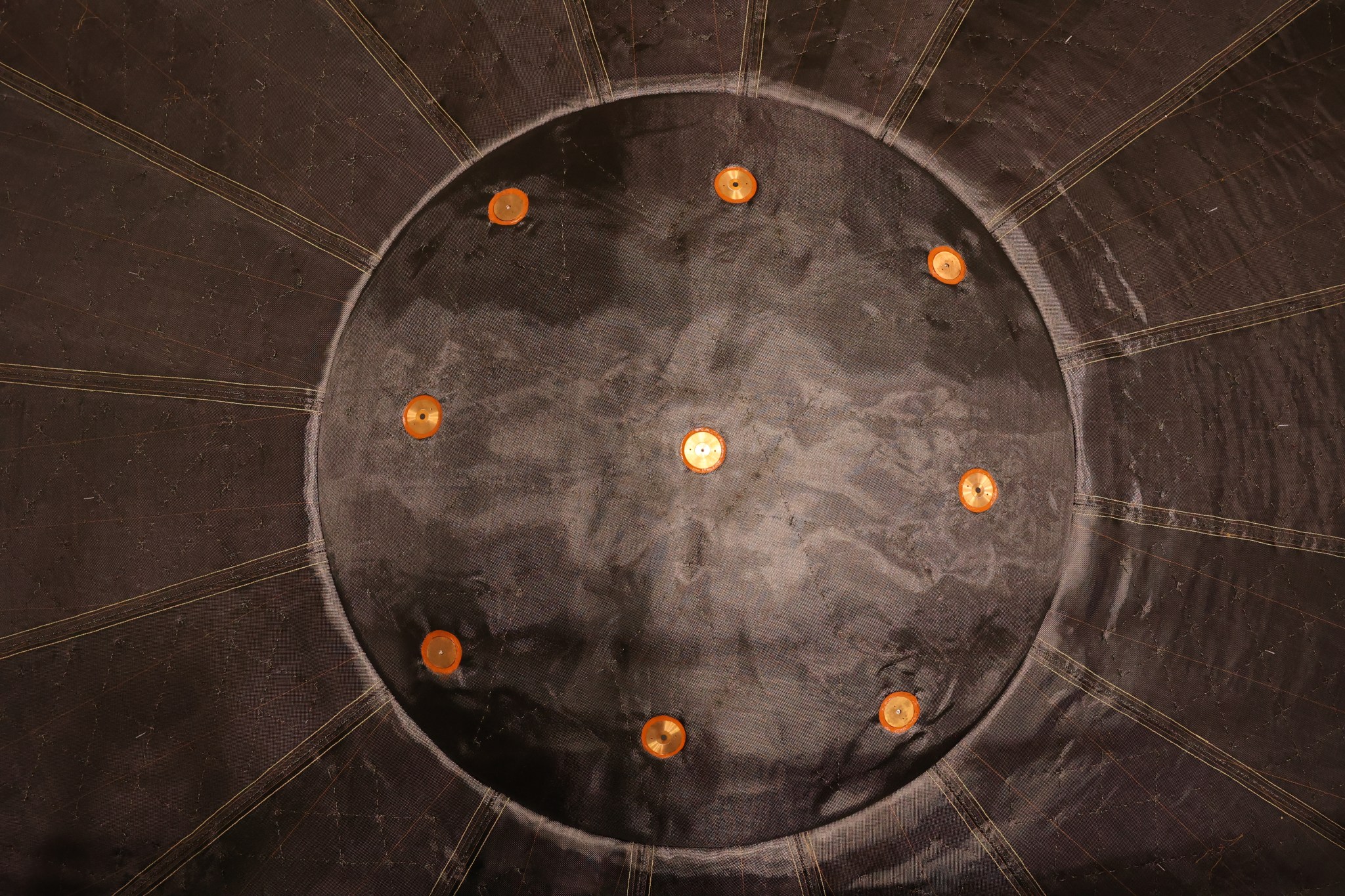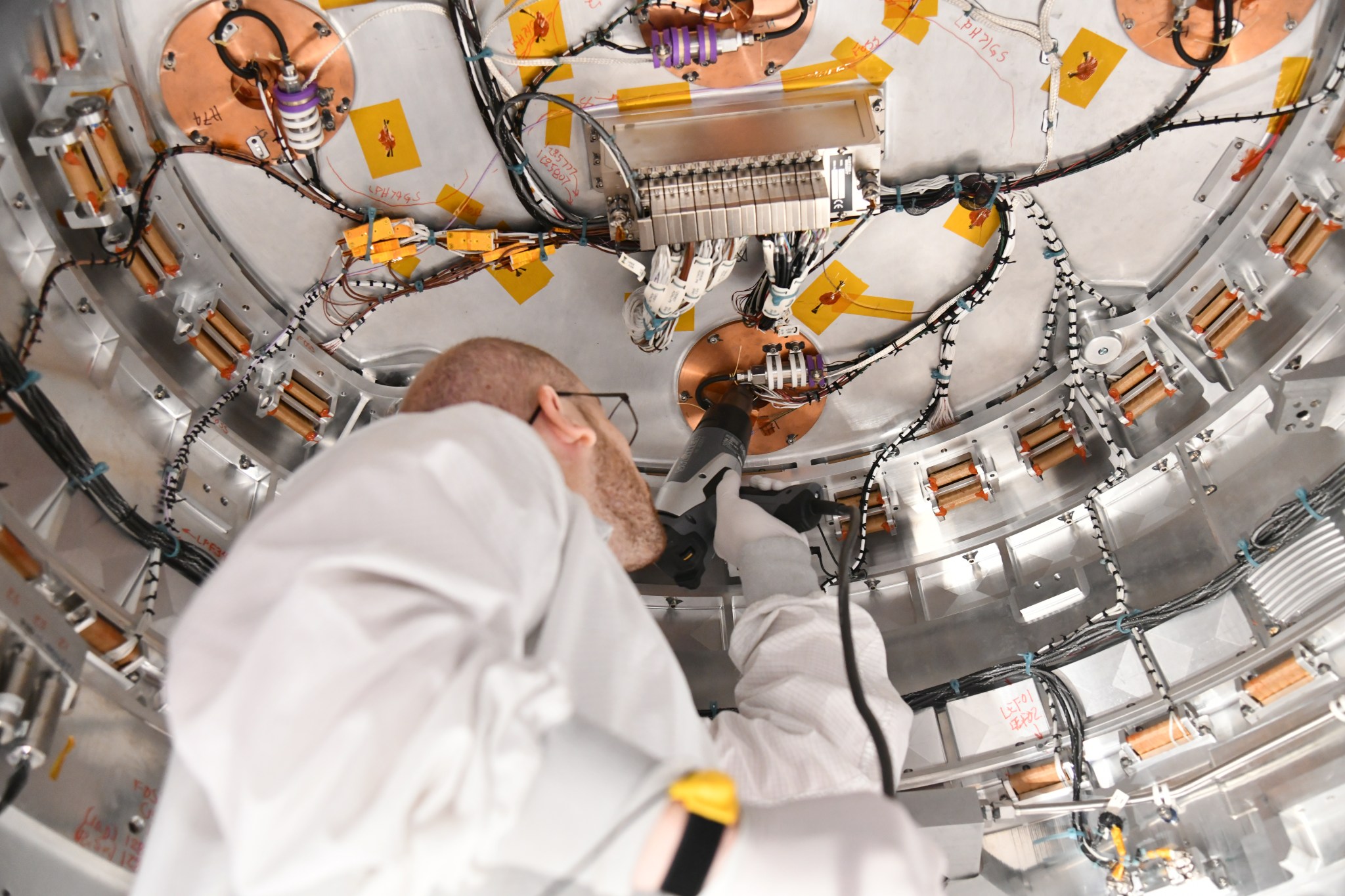NASA has its sights set on sending humans to Mars in the coming decades and sending spacecraft even farther out in our solar system. These increasingly complex missions require more capable technologies to enable safe passage for cargo, complex payloads, and even people on the dangerous dash through a planet’s atmosphere to reach the surface.
To develop that capability, NASA’s Low-Earth Orbit Flight Test of an Inflatable Decelerator (LOFTID) mission will test a new heat shield designed to inflate to protect heavier payloads on the journey through an atmosphere. A heat shield protects a spacecraft during the fiery descent, where temperatures can reach levels up to half the temperature of the Sun’s surface. During LOFTID’s test mission, a suite of sensors on the re-entry vehicle will collect data to help researchers understand how it performed during the flight.
“The data is the star of the show,” said Greg Swanson, instrumentation lead for LOFTID at NASA’s Ames Research Center in California’s Silicon Valley. “Learning how this inflatable heat shield performs in these extreme conditions is exactly how we scale this technology up to one day take humans and their cargo to Mars.”
NASA’s Langley Research Center in Hampton, Virginia, leads the LOFTID mission, with contributions from other NASA centers. LOFTID’s instrumentation development, including designing, procuring, calibrating, and testing all of the sensors on the vehicle, is led by NASA Ames.
A Comprehensive Instrument Suite
LOFTID’s main goal is to demonstrate one of the most difficult parts of spaceflight, atmospheric entry, with a new piece of technology that may one day be used to protect humans on a trip to another world. During this demonstration mission, LOFTID’s suite of state-of-the-art sensors will monitor the vehicle’s experience and capture data in two recorders – one that will stay with the craft through splashdown and a backup that will eject from the craft during re-entry. Researchers and engineers will use that information to improve future designs.
Traversing through an atmosphere to land on another world or return to Earth from orbit takes a spacecraft to extreme speeds, generating a tremendous amount of heat due to both the convection of hot gas flowing around the spacecraft and the radiation created by the shockwave that forms. The spacecraft must withstand changes in pressure, heat rate, temperature, and more. The instruments on board must be able to account for all these shifting variables.
The instrument suite for LOFTID is comprehensive. Pressure sensors and strap loadcell pins will characterize the total force felt by the spacecraft. Total heat flux gauges measure energy transfer, capturing detailed readings across the body of the craft. A radiometer will measure the spacecraft’s exposure to radiation as a result of the gas ionization induced by the hypersonic shockwave. One hundred thermocouples will monitor temperatures all across the vehicle.
LOFTID will also use a parachute to break its fall into the Pacific Ocean and an “up look” camera installed at the top of the vehicle will capture launch vehicle separation and monitor parachute deployment for later review by the research team.
LOFTID’s instrumentation was developed through the partnership and expertise of multiple NASA centers across the country in addition to NASA Ames, including Langley Research Center, Marshall Spaceflight Center, and Armstrong Flight Research Center. These include GPS systems, experimental temperature sensors, specialized cameras, and more. The mission team designed a tailored package of instruments to collect ample data on LOFTID’s perilous journey, but they also needed to make sure the sensors would survive the trip themselves.

Testing and Calibrating for Extreme Temperatures
The LOFTID spacecraft is designed to withstand the dangerous journey through Earth’s atmosphere from low-Earth orbit, and the instruments on board have to be equally resilient. Researchers at Ames took the lead on testing and calibrating LOFTID’s instruments and found two concerns that were addressed prior to launch.
One was related to the radiometers and total heat flux gauges, which measure radiation and energy transfer. During testing, the Ames Sensors and TPS Advanced Research (STAR) Laboratories conducted calibration that indicated discrepancies in sensor readings and successfully re-calibrated the instruments with improved techniques for more accurate readings.
A second fix was related to the materials used for the 100 thermocouple sensors across the spacecraft. Early tests found that thermocouples in several key locations in LOFTID’s original configuration might not perform properly in expected flight environments. Using a tube furnace facility at Ames, a new configuration was developed. The performance of this new configuration was verified at conditions that replicate atmospheric re-entry via testing at the Boeing Large Core Arc Tunnel facility in St. Louis. This testing ensured the sensors could safely and accurately collect data on the trip.
“Bringing anything through an atmosphere from space is difficult, especially at this scale and on worlds like Mars, Titan, and Venus,” said Cole Kazemba, LOFTID aeroshell instrumentation lead at Ames. “But by doing what LOFTID’s doing now – collecting data, testing on the ground and then in flight, learning and scaling up – NASA is making sure that, when we’re ready, we’ll be able to safely land on our destinations near and far.”
For news media:
Members of the news media interested in covering this topic should reach out to the NASA Ames newsroom.
The LOFTID project is managed and funded through NASA’s Technology Demonstration Missions program, part of the agency’s Space Technology Mission Directorate. The project is led by NASA’s Langley Research Center in Hampton, Virginia, in partnership with United Launch Alliance and with contributions from NASA’s Ames Research Center in Silicon Valley, Marshall Space Flight Center in Huntsville, Alabama, and Armstrong Flight Research Center in Edwards, California. NASA’s Launch Services Program, based at the agency’s Kennedy Space Center in Florida, is responsible for managing the launch service.
NASA and ULA dedicated the technology demonstration to the late Bernard Kutter. As ULA’s manager for advanced programs, Kutter was instrumental in developing the plan to test the system on an Atlas V rocket.
Author: Frank Tavares, NASA’s Ames Research Center




























